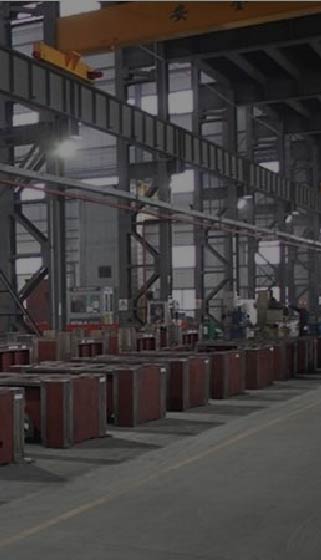








In this comprehensive guide, we explore the intricacies of the high-speed stamping process, the marvels of high-speed press machines, and their significant impact on modern production. This advanced manufacturing realm, where precision meets efficiency, is revolutionizing industries from automotive to electronics. Whether you are a seasoned manufacturer or new to the field, this article will provide you with essential insights into the world of high-speed stamping, ensuring you stay ahead in the competitive market.
The structure of a high-speed stamping machine is a marvel of engineering, designed to deliver unparalleled precision and efficiency. At its core, the machine comprises several key components. The bed, the solid foundation, supports the entire operation, ensuring stability and durability. Mounted on the bed is the bolster plate, which holds the die in place.
The heart of the machine is the ram, which moves up and down to press the material into the die. This movement is powered by an advanced drive system, often a servo-motor for precise control and speed. The feed system, another crucial component, precisely advances the material through the machine, ensuring that each stamping operation is accurately positioned.
Control systems in high-speed stamping presses are sophisticated, allowing for intricate programming and adjustments. Sensors and monitors provide real-time feedback, ensuring each stamping operation meets strict quality standards.
High-speed stamping machines come in various types to accommodate different manufacturing needs. The most common types include mechanical, hydraulic, and servo-driven presses. Mechanical presses, known for their speed and reliability, are ideal for high-volume production. They use a flywheel to store and transfer energy, allowing for rapid and consistent stamping.
Hydraulic presses offer versatility and are preferred for their ability to apply consistent pressure over a longer stroke. This makes them suitable for complex shapes and thicker materials. Servo-driven presses, the latest innovation in this field, provide unparalleled control over the stamping process. With adjustable speed and stroke, they offer flexibility and precision, making them ideal for intricate stamping operations.
The realm of high-speed stamping extends far beyond the confines of a single industry. Its applications are as varied as they are vital, making it a cornerstone in numerous sectors. Let's delve into some of these key applications.
One of the primary beneficiaries of high-speed stamping is the automotive industry. Here, the need for high-volume, precise, and consistent parts - such as brackets, connectors, and terminals - is paramount. The efficiency and speed of high-speed stamping presses enable manufacturers to meet these demands, ensuring safety and reliability in every vehicle.
In the electronics industry, the process shines in its ability to produce intricate components with extreme precision. From connectors to circuit board components, high-speed stamping is behind the small yet essential parts that power our daily gadgets.
The aerospace sector also relies on this technology for manufacturing various components. The precision and strength required for aerospace parts are non-negotiable, and high-speed stamping delivers on both fronts.
Additionally, the medical industry finds high-speed stamping invaluable, particularly in producing small, precise instruments and devices. The process's ability to work with a variety of materials, including biocompatible metals, makes it indispensable.
Understanding the evolution from traditional stamping to high-speed stamping is crucial in appreciating the advancements in modern manufacturing. While both processes fundamentally shape and cut materials into specific forms, the approach and efficiency differ significantly.
Traditional stamping, often referred to as conventional stamping, has been the backbone of the manufacturing industry for decades. It involves a press, die, and material, and is known for its versatility and reliability. However, the speed and efficiency of this method are relatively limited compared to high-speed stamping.
High-speed stamping, on the other hand, represents a leap in technology. It operates at a much faster pace, often measured in hundreds of strokes per minute. This speed dramatically increases production rates, making it ideal for high-volume manufacturing. The use of advanced high-speed presses also allows for greater precision and consistency in parts.
One key advantage of high-speed stamping is the reduction in production costs. The increased speed leads to a higher output in a shorter time, reducing labor and operational costs. Additionally, the precision of high-speed stamping reduces material wastage, further cutting down expenses.
However, high-speed stamping requires a larger initial investment in specialized machinery and tooling. The complexity of these machines also calls for skilled operators and maintenance. In contrast, traditional stamping equipment is generally more affordable and easier to maintain.
The most pronounced advantage of high-speed stamping is the significant improvement in productivity and efficiency. The rapid operation of these machines means higher output in less time, a crucial factor in meeting the demands of fast-paced markets.
With increased efficiency comes cost savings. The faster production rate of high-speed stamping reduces labor costs and operational expenses, contributing to a lower cost per unit. This efficiency also translates to a faster time to market, providing a competitive edge.
The precision of high-speed stamping presses ensures consistency and accuracy in every part produced. This level of uniformity is essential in industries where even minor deviations can have significant consequences.
High-speed stamping isn’t limited to a single type of material. These machines can efficiently work with a range of materials, from lightweight aluminum to robust steel, offering versatility in manufacturing.
An often-overlooked advantage is the environmental benefits. High-speed stamping is more efficient in its use of materials, reducing waste. Furthermore, the technology advancements often include energy-saving features, contributing to a smaller environmental footprint.
A significant drawback of high-speed stamping is the initial investment cost. The machinery and technology required are more expensive than traditional stamping presses, posing a barrier to entry for some businesses.
While high-speed stamping excels in precision and efficiency, it offers less flexibility in stamping design compared to some other processes. This limitation can be a drawback when custom or varied designs are required.
The high-speed operation can pose security risks. The fast-moving parts and high pressure require stringent safety measures to protect operators and maintenance personnel.
Operating and maintaining high-speed stamping presses requires special training. The complexity and sophistication of these machines mean that skilled personnel are essential, adding to the operational costs.
The advancement in materials has significantly influenced the stamping industry. In high-speed stamping, the use of advanced materials not only improves the quality of the final product but also enhances the process's efficiency. These materials range from high-strength steels to non-ferrous metals like aluminum and brass, as well as various alloys known for their specific properties like corrosion resistance and strength-to-weight ratio.
The application of advanced composites and polymers has also emerged, offering unique benefits like reduced weight and increased durability. The integration of these materials into stamping processes has opened new possibilities in various industries, including automotive and aerospace, where the demand for lightweight yet strong components is high.
The properties of materials used in stamping significantly affect the process's success. Factors such as tensile strength, ductility, and hardness determine how the material will behave under the stamping process. For instance, materials with high ductility are more suitable for forming complex shapes, while those with high tensile strength are preferred for parts requiring high durability.
The thickness and grain structure of the material also play a vital role. Thicker materials require more force and may impact the speed of the stamping process, while the grain structure can affect the material's ability to deform without breaking. Understanding these material properties is crucial for selecting the right material for specific stamping applications, ensuring efficiency, and reducing waste.
In the realm of high-speed stamping, maintaining precision is paramount. This is achieved through advanced machine design that includes precision tooling and state-of-the-art control systems. These systems ensure that every movement and operation is exact, minimizing the chances of errors even at high speeds. The use of servo-driven presses, which allow for precise control over the stamping process, is a testament to this commitment to precision.
Effective monitoring and inspection are critical in ensuring the quality of stamped parts. This involves a combination of real-time monitoring during the stamping process and post-production inspections. Real-time monitoring often uses sensors and cameras to detect anomalies, while post-production inspections might include dimensional checks and surface quality assessments using various metrology tools. This multi-layered approach helps in identifying and rectifying issues promptly.
Despite best efforts, defects can occur in any manufacturing process. In high-speed stamping, common defects include misalignments, burrs, and inconsistencies in thickness or shape. Addressing these defects involves a thorough understanding of their root causes. This might include adjustments in machine settings, tooling, or even material properties. Continual improvement practices and regular maintenance of equipment are also crucial in minimizing the occurrence of these defects.
The maintenance of high-speed stamping machines is crucial in ensuring their longevity and optimal performance. Regular and systematic maintenance not only prevents unexpected downtime but also ensures consistent quality in stamping operations.
Key maintenance practices include regular lubrication of moving parts, routine checks and replacements of wear components, and calibration of the press and tooling. These tasks help in avoiding mechanical failures and maintaining precision in stamping processes.
Besides mechanical upkeep, the electrical and control systems of high-speed stamping machines also require attention. Regular software updates, inspection of electrical connections, and testing of control systems are essential to prevent control failures and ensure the seamless operation of the machinery.
Preventative maintenance is a proactive approach that involves identifying and addressing potential issues before they escalate into significant problems. This approach often includes the use of diagnostic tools and predictive analytics to monitor machine performance and predict when maintenance should be performed.
In summary, the maintenance of high-speed stamping machines is not just about fixing issues as they arise. It's about adopting a comprehensive maintenance strategy that includes regular check-ups, preventative measures, and timely upgrades to ensure the machinery operates at its best, thereby supporting uninterrupted and efficient production.
One of the primary considerations when selecting a high-speed stamping solution is the required output. This encompasses not only the quantity of parts needed but also the speed at which they must be produced. High-speed stamping machines are ideal for large-volume productions where speed is critical. Understanding the demand and production targets is essential in choosing the right stamping machine that aligns with your output requirements.
The complexity of the stamping process and design considerations are crucial factors. This includes the intricacy of the parts to be stamped, the material used, and the precision required. High-speed stamping presses vary in their capabilities to handle complex designs and different materials. It’s important to match the machine’s capabilities with the design requirements to ensure high-quality output without compromising on efficiency.
Lastly, the available budget and resources play a significant role in the decision-making process. High-speed stamping equipment requires a substantial initial investment. Additionally, the operational costs, including maintenance, energy consumption, and manpower, should be considered. Balancing the cost with the expected return on investment and production needs is key in selecting a high-speed stamping solution that is both effective and economically viable.
In conclusion, the journey through the world of high-speed stamping reveals its indispensable role in modern manufacturing. With its unparalleled efficiency, precision, and versatility, high-speed stamping is not just a process; it's a gateway to innovation and productivity. For those looking to embrace this technology, look no further than JDM, China's leading manufacturer of high-speed press machines. Discover how JDM can revolutionize your production at https://www.jdmpresses.com/, and step into the future of manufacturing with confidence and excellence.
Read More:






